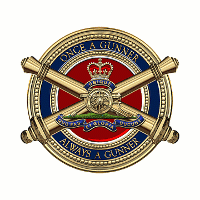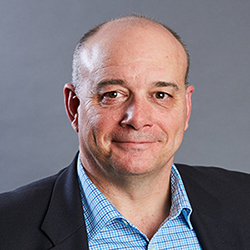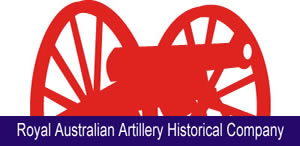Dick Eason, as he was better known to his colleagues, was born in Geelong on 20 November 1913, and was one of a large family, and had to battle out his early life during the Great Depression. He joined the Post Master General’s Department (PMG) as a telegram boy, and slowly arose to a Trainee Telephone Technician.
He joined the Citizen Military Forces (CMF) in 1937 as a Gunner in the Royal Australian Artillery, and he was still a Gunner when he joined the 2nd AIF in the first days of World War II in 1939. His Army Number, VX998 proves his early enlistment, and he was seconded toe 2nd/2nd Field Regiment RAA. After initial training, he was promoted to Sergeant and offered a Commission before the Unit sailed for the Middle East. He refused the Commission because it would have necessitated him leaving the 2nd/2nd Field Regiment.
Dick served in the first campaign that the AIF was involved in in WWII in the Western Desert, and he distinguished himself in this campaign and was rewarded by being offered a Commission in the field. He later served in Greece, Crete, and Syria before returning to Australia.
He served in New Guinea with his Regiment in the campaigns that the 6th Division were involved in, and it was during the Aitapie-Wewak Campaign in 1945, that he was awarded the Military Cross for bravery in the field. His citation read: “Captain Eason was Forward Observer with Mountain Force. After the initial ascent he went forward with a small escort, to within 50 yards of the enemy position to bring artillery fire to bear. Due to the intensity of the jungle, this was the only position from which registration could be carried out. Part of the plan for the attack include an air attack on a target to be indicated by Artillery fire and smoke. Whilst registration was in progress, worked was received that the air strike was cancelled. Captain Eason and party then continued on with registration of all guns. While doing this, the air strike was in fact put down right on his observation post. Despite the danger, he held his position, and endeavoured to bring down artillery fire to indicate correct target. The following day he went forward with the reconnaissance party to a new observation post to that of his previous registration. The infantry assisted by covering fire and advance to a position six yards from the enemy where a grenade battle was fought. During the whole operation, Captain Eason’s coolness and courage was outstanding.”
During the post war period, Dick Eason made himself available with the re-establishment of the CMF and in the early 1950s was appointed Commanding Officer of the 22nd Field Regiment (Self Propelled) RAA. He brought to this appointment considerable elan, and, since the unit was part of the Armoured Brigade, the Black Beret was worn with the Gunner Badge. Unfortunately, in the re-organisation of 1957, this unit was taken off the order of battle. It’s ’Yerambah’ equipment was not to fire again on the Puckapunyal Range. (A ‘Yerambah’ was a 25 Pounder gun on a tank chassis).
Dick’s leadership qualities were further recognised with his promotion to Brigadier and his appointment as Commander Royal Artillery (CRA) in the 3rd Infantry Division, the CMF unit based in Victoria.
The Efficiency Decoration was conferred upon him for long an honourable service to the CMF. After the war he rejoined the PMG as a telephone technician in the Engineering Section of the Department. For many years he was instructor at the Technicians’ Training School, and his expertise and knowledge later accorded him an appointment to the Head Office of the Engineering Branch when he was asked to use his administrative skills in the Department. He was later appointed as one of the two PMG Representatives on the Victorian State Disaster Planning Authority, and it was through this Authority that the State Government asked him on a number of occasions, whether he would take up the position of Chairman of the Country Fire Authority. Finally, he was appointed Chairman of the Country Fire Authority (CFA) in September 1965, and he held this office until he retired in December 1978.
Above everything, Dick Eason was a patriot. He believed in Australian, and Crown, and the Constitutional Monarchy, and the English Common Law and the Parliament and it was in this sense that he spoke out fearlessly at all times. He was the President of the British Brotherhood, Vice-President of the British Commonwealth Monarchy in Australia.
He was a member of the RSL, Victoria Branch Defence Committee, where he was to speak to a paper that he had prepared at a meeting which was to be held the Monday night after his death.
Dick Eason was not only a leader in war, but in peace. He was admired tremendously by his many ex-service friends and he was admired by all who met him. Those that despised him were those that would bring Australia to her knees. I am indeed proud to have known Dick Eason as a very close friend. Long after many others are forgotten, the name Eason will be remembered throughout the land.
The following quotation seems most appropriate to the life of Dick Eason: “I shall pass through this world but once. If, therefore, there is any kindness I can show, or any good thing I can do, let me do it now. Let me not defer it or neglect it, for I shall not pass this way again.”
Dick Eason died on the morning of 13 November 1979. The Funeral Service which was held at his Parish Church at Sandringham, was attended by former colleagues, and representatives of his many areas of influence. He was survived by his wife, a daughter and two sons. He will lone be remembered by all those who were honoured to have worked under him. |






